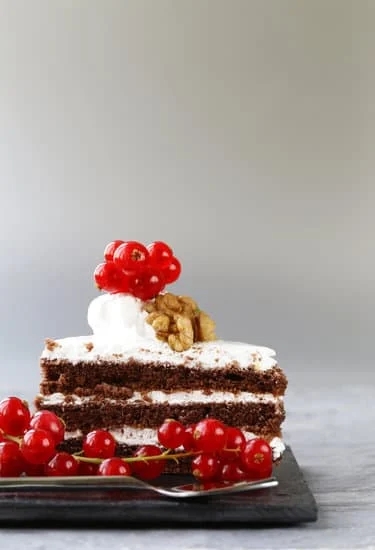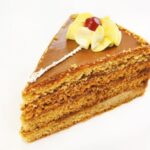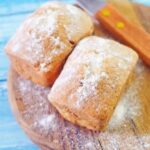Decorations for cakes play a crucial role in enhancing the overall appearance and appeal of any baked creation. Whether it’s a simple birthday cake or an intricate wedding cake, the right decorations can truly elevate the dessert to a work of art. From fondant to edible glitter, there are endless options when it comes to adorning cakes with beautiful embellishments.
When it comes to cake decorating, the possibilities are truly limitless. Edible decorations such as fondant, gum paste, and buttercream flowers allow for intricate designs that not only look stunning but also taste delicious. On the other hand, non-edible decorations like sprinkles, edible glitter, and edible pearls add a touch of sparkle and glamour to any cake.
Whether you’re a novice baker looking to try your hand at DIY cake decoration ideas or a professional pastry chef seeking to master advanced techniques like airbrushing and fondant sculpture, there is always something new to learn in the world of cake decorating. With trends like drip cakes and geode cakes taking the baking world by storm, staying updated on the latest styles and techniques is essential for creating show-stopping desserts.
Types of Edible Decorations for Cakes
When it comes to decorating cakes, the possibilities are truly endless. Edible decorations can take a cake from simple to stunning with just a few creative touches. Three popular options for edible decorations are fondant, gum paste, and buttercream flowers.
Here are some ideas for using these edible decorations on your cakes:
- Fondant: This versatile and pliable icing is perfect for creating smooth surfaces on cakes and adding intricate details. Whether you want to cover an entire cake or create fun figurines and shapes, fondant is an excellent choice.
- Gum paste: Similar to fondant but firmer in texture, gum paste is ideal for making delicate flowers, leaves, and other 3D decorations. It dries quickly and holds its shape well, making it a favorite among professional cake decorators.
- Buttercream flowers: Using buttercream frosting to create beautiful floral designs is a classic technique that adds both flavor and visual appeal to cakes. With the right piping tips and a steady hand, you can craft roses, tulips, daisies, and more in vibrant colors.
Incorporating these edible decorations into your cake designs can elevate your creations and impress your guests with both taste and aesthetics. Experimenting with different techniques and styles will help you discover what works best for your unique vision when it comes to decorating cakes.
Non-Edible Decorations for Cakes
Edible pearls are elegant decorations that elevate the look of cakes with their lustrous appearance. These small spherical beads come in various sizes and colors, adding sophistication and refinement to desserts.
Edible pearls can be used individually as accents on cakes or arranged in elaborate patterns to create stunning designs. Whether it’s a wedding cake that needs a touch of elegance or a birthday cake that requires a hint of glamour, edible pearls are versatile decorations that enhance the overall aesthetic appeal of any confection.
When using non-edible decorations for cakes, it is essential to consider the taste and consistency of the adornments. While sprinkles and edible glitter provide visual interest without altering the flavor of the cake significantly, edible pearls offer a subtle crunch and texture that complement the softness of the dessert.
By incorporating these non-edible decorations thoughtfully into cake designs, bakers can achieve eye-catching creations that not only look beautiful but also delight the taste buds of those enjoying them.
DIY Cake Decoration Ideas
When it comes to decorating cakes, the possibilities are endless. DIY cake decoration ideas allow for a personal touch and creativity that can make any cake stand out. Whether you’re a beginner or an experienced baker, these ideas can help you elevate your cake decorating game. Here are some DIY cake decoration ideas to consider for your next baking project:
- Hand-Painted Designs: Use food coloring or edible paint to create intricate designs on your cakes. From watercolor effects to detailed floral patterns, hand-painted designs add a unique and artistic flair to any cake.
- Piped Decorations: Master the art of piping with buttercream or royal icing to create beautiful borders, intricate lace designs, and elegant lettering on your cakes. Experiment with different piping tips to achieve various textures and shapes.
- Floral Arrangements: Create stunning floral arrangements using buttercream flowers or edible sugar flowers. Arrange them strategically on your cake to add a touch of elegance and sophistication.
These DIY cake decoration ideas not only allow you to showcase your skills but also let you customize cakes for any occasion. Whether it’s a birthday celebration, a wedding reception, or a simple get-together, incorporating these decorative elements will surely impress your guests and satisfy their sweet cravings. Experiment with different techniques and unleash your creativity when decorating cakes with these DIY ideas.
Remember, practice makes perfect when it comes to cake decorating. Don’t be afraid to try new techniques and explore different styles to find what works best for you. With patience and dedication, you’ll be able to master these DIY cake decoration ideas and create stunning confections that look as good as they taste. So roll up your sleeves, gather your tools, and get ready to dazzle everyone with your beautifully decorated cakes.
Professional Cake Decorating Techniques
When it comes to professional cake decorating techniques, there are several advanced methods that can take your cake decoration skills to the next level. Cake stencil is one such technique that allows decorators to create intricate and detailed designs on cakes using a variety of patterns. By placing a stencil over the cake surface and dusting it with powdered sugar or cocoa, beautiful designs can be achieved with precision.
Another popular technique is airbrushing, which involves using an airbrush tool to spray edible food coloring onto cakes. This technique gives decorators more control over color blending and shading, resulting in stunning ombre effects or vibrant designs on cakes. Airbrushing is particularly favored for creating smooth gradients and adding depth to decorations.
Fondant sculpture is a more complex technique that involves shaping and molding decorative elements out of fondant, a pliable icing-like material. Skilled decorators can create intricate figurines, flowers, or themed accents using fondant sculpture to elevate the visual appeal of cakes. From whimsical characters to lifelike flowers, the possibilities with fondant sculpture are endless.
| Professional Technique | Description |
|---|---|
| Cake Stenciling | Create intricate designs by dusting powdered sugar or cocoa over a stencil placed on the cake surface. |
| Airbrushing | Spray edible food coloring onto cakes for seamless color blending, shading, and vibrant designs. |
| Fondant Sculpture | Create detailed figurines, flowers, or themed accents by shaping fondant into sculptural elements. |
Trends in Cake Decorations
One of the most exciting aspects of cake decorating is keeping up with the latest trends. In recent years, three particular styles have taken the baking world by storm – drip cakes, geode cakes, and naked cakes. Drip cakes feature a colorful glaze that drips down the sides of the cake, adding an element of whimsy and fun.
Geode cakes mimic the look of natural crystals inside the cake layers, creating a stunning and unique visual effect. Naked cakes, on the other hand, are simple yet elegant creations with minimal frosting on the outside to showcase the cake layers within.
Drip cakes have become increasingly popular for birthdays and special occasions due to their versatility in color combinations and toppings. The dripping effect can be achieved with various types of ganache or melted chocolate, allowing for endless creative possibilities.
Geode cakes are perfect for weddings and upscale events, as they require a skilled hand to create intricate designs that resemble real geological formations. Naked cakes have gained popularity for their rustic charm and organic feel, making them a trendy choice for bohemian weddings or outdoor gatherings.
These trends in cake decorations offer both amateur bakers and professional pastry chefs exciting new avenues for creativity. By incorporating elements like drip effects, geode designs, or naked finishes into their creations, bakers can stay at the forefront of modern dessert styling. Experimenting with these innovative techniques can elevate any cake design to a work of art that will impress guests and clients alike.
| Trend | Description |
|---|---|
| Drip Cakes | Colorful glaze dripping down the sides for a fun look |
| Geode Cakes | Cake layers designed with crystal-like formations for a stunning visual effect |
| Naked Cakes | Simple yet elegant cakes with minimal frosting to highlight the inner layers |
Choosing the Right Decorations for Different Occasions
When it comes to choosing the right decorations for cakes, the occasion plays a crucial role in determining the style and design. Wedding cakes, birthday cakes, and baby shower cakes each have their own unique aesthetic requirements that can be enhanced by the appropriate decorations.
For wedding cakes, elegant and sophisticated decorations are often preferred. Classic choices include delicate piped details, intricate fondant sculptures, or edible pearls cascading down the tiers. Couples may also opt for floral arrangements made from gum paste or fresh flowers to match the overall theme of the wedding.
Birthday cakes offer more flexibility in terms of decorations, allowing for creativity and personalization. Bright colors, fun shapes, and playful designs are popular choices for birthday celebrations. Sprinkles, edible glitter, and themed cake toppers can add a festive touch to the cake while reflecting the personality of the birthday honoree.
Baby shower cakes tend to focus on themes related to pregnancy, parenthood, or gender reveals. Pastel colors, baby booties made from fondant or gum paste, and adorable animal figurines are commonly used decorations for these occasions. Edible images with cute baby motifs or inscriptions can also be a charming addition to a baby shower cake.
Whether it’s a wedding cake symbolizing love and commitment, a birthday cake celebrating life and milestones, or a baby shower cake welcoming a new addition to the family, choosing the right decorations is essential in capturing the essence of the occasion and delighting guests with both visual appeal and taste sensation.
Tips and Tricks for Perfecting Cake Decorations
Decorating a cake is not just about making it visually appealing but also ensuring that the decorations enhance the overall taste and presentation. Whether you are a beginner or an experienced baker, mastering the art of cake decoration can take your creations to the next level. In this section, we will delve into some essential tips and tricks for perfecting cake decorations, including color coordination, texture techniques, and storage of decorated cakes.
Color Coordination
One of the key aspects of cake decorating is achieving a harmonious color scheme that complements the overall theme of the occasion. When selecting colors for your decorations, consider using a color wheel to guide your choices. Complementary colors, which are opposite each other on the color wheel, create a striking contrast when paired together.
Analogous colors, which are next to each other on the color wheel, create a more subtle and cohesive look. Experiment with different shades and tones to find the perfect balance for your cake decorations.
Texture Techniques
Adding texture to your cake decorations can elevate the visual appeal of your creations. You can use various tools and techniques to create different textures, such as using icing combs for a smooth finish or textured rollers for intricate designs. For buttercream cakes, try using different piping tips to create swirls, rosettes, or lace patterns.
Fondant can also be molded and sculpted to add dimension and texture to your decorations. Don’t be afraid to experiment with different techniques to discover unique textures that will make your cakes stand out.
Storage of Decorated Cakes
Properly storing decorated cakes is crucial to maintaining their freshness and appearance. After decorating your cake, allow any icing or fondant decorations to set before covering it with a cake dome or plastic wrap. It’s important to store decorated cakes in a cool, dry place away from direct sunlight or heat sources to prevent melting or drooping of decorations.
If you need to refrigerate your decorated cake, place it in an airtight container to prevent absorption of odors from other foods in the fridge. When ready to serve the cake, allow it to come to room temperature before removing any coverings to avoid condensation on the decorations.
By paying attention to these tips and tricks for color coordination, texture techniques, and storage of decorated cakes, you can ensure that your creations not only look stunning but also taste delicious. Let your creativity shine through as you experiment with different decoration methods and techniques to take your cake decorating skills to new heights.
Conclusion
Decorations for cakes play a crucial role in elevating the overall presentation and appeal of a dessert. Whether it’s a simple birthday cake or an elaborate wedding cake, the creativity and artistry behind the decorations can truly make a cake stand out. From edible fondant sculptures to intricate hand-painted designs, the possibilities for decorating cakes are endless.
Professional cake decorators utilize various techniques such as airbrushing and fondant sculpting to create stunning and intricate designs that are sure to impress. On the other hand, DIY enthusiasts can explore their creative side with simple yet effective ideas like piped decorations and floral arrangements. The key is to find the right balance between creativity and skill when decorating cakes.
When choosing decorations for different occasions such as weddings, birthdays, or baby showers, it’s important to consider the theme and color scheme of the event. Whether it’s a whimsical drip cake or an elegant geode cake, selecting the perfect decorations can enhance the overall theme of the celebration.
By paying attention to details like color coordination and texture techniques, anyone can master the art of decorating cakes to perfection. After all, creating beautiful cakes is not just about taste but also about visual appeal – making every bite a delightful experience for everyone involved.
Frequently Asked Questions
What Can I Use to Decorate a Cake?
There are several ways to decorate a cake, including using frosting or icing to create designs, shapes, and patterns. Edible decorations like sprinkles, berries, chocolate shavings, and edible flowers can also be used to enhance the visual appeal of a cake.
What Are the 5 Kinds of Cake Decorating?
The five main kinds of cake decorating techniques are piping, fondant, buttercream flowers, hand-painted designs, and edible images. Each technique offers a unique way to decorate a cake and allows for endless creativity when it comes to design and presentation.
What Are the 7 Different Cake Decorating Techniques?
Some popular cake decorating techniques include piping (using different tips to create borders, flowers, and other intricate designs), fondant work (covering cakes with smooth fondant and creating shapes or figures with it), layering (creating different layers of frosting or fillings for added texture), stencil work (using stencils to create patterns or designs on cakes), airbrushing (using an airbrush gun to paint designs on cakes), sculpting (carving cakes into various shapes or figures), and brush embroidery (creating delicate lace-like patterns with a small brush and icing).
These techniques require skill and patience but can result in stunning cake decorations.

Welcome to our cake decorating blog! My name is Destiny Flores, and I am the proud owner of a cake decorating business named Cake Karma. Our mission is to provide delicious, beautiful cakes for all occasions. We specialize in creating custom cakes that are tailored specifically to each customer’s individual needs and tastes.





